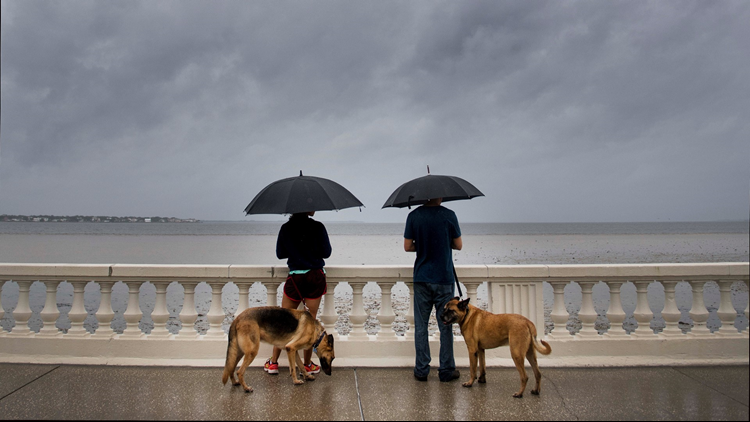TAMPA, Fla. -- The 2017 Hurricane Season was not just one to remember, but one for the history books.
The season got off to an early start on April 20 when Tropical Storm Arlene developed in the middle of the Atlantic, becoming only the second Atlantic tropical storm to develop in April.
The tropics were calm through May before firing up again in June with two tropical storms for the first official month of hurricane season. July saw two tropical storms as well, with Tropical Storm Emily making landfall on Florida's west coast here in the Bay Area on Anna Maria Island.
Watch: Emily weakens as it moves across Florida
A sudden ramp up
Hurricane season turned it up a notch in August with Franklin -- the season’s first hurricane -- forming on Aug. 9 before Harvey became the season’s first major hurricane on Aug. 25. Harvey then went on to be the first Category 4 hurricane to make landfall on the U.S. since Charley in 2004.
After slamming into the southern Texas coast, Harvey dropped an estimated 27 trillion gallons of rain over portions of Texas and Louisiana in just six days, producing unprecedented flooding.
And then Irma... Irma became a tropical storm Aug. 30 more than 3,000 miles away from Tampa Bay off the coast of Africa. Six days later, Irma strengthened to a Category 5 hurricane as it made its way across the Atlantic before ripping through the Caribbean.
By the time Irma reached the Florida Keys, it was a Category 4 hurricane with sustained winds of 130 mph.
Irma then made landfall as a Category 3 on Marco Island on Sept. 10, with sustained winds of 115 mph. Irma tracked north, battering the Tampa Bay Area as a Category 2 hurricane with winds of 100 mph.
September certainly proved to be the peak of hurricane season where between Sept. 6-8, hurricanes Irma, Jose and Katia all were spinning in the Atlantic at the same time.
Devastation in Puerto Rico
And then September got even worse.
Between Sept. 17-18, Maria rapidly strengthened from a tropical storm to a Category 5 hurricane in less than 30 hours. Maria ripped through the Caribbean before hitting Puerto Rico as a strong Category 4 hurricane with 155 mph winds.
Maria was the strongest storm to hit Puerto Rico in 85 years.
Hurricane season remained in high gear all the way into October with hurricanes Nate and Ophelia, which tied the record as the tenth consecutive storm to become a hurricane.
In total, 2017 had the most storms since 2012 with 17 named storms, 10 hurricanes, six major hurricanes with two Category 5 storms.
►Make it easy to keep up-to-date with more stories like this. Download the 10 News app now.
Have a news tip? Email desk@wtsp.com, or visit our Facebook page or Twitter feed.



